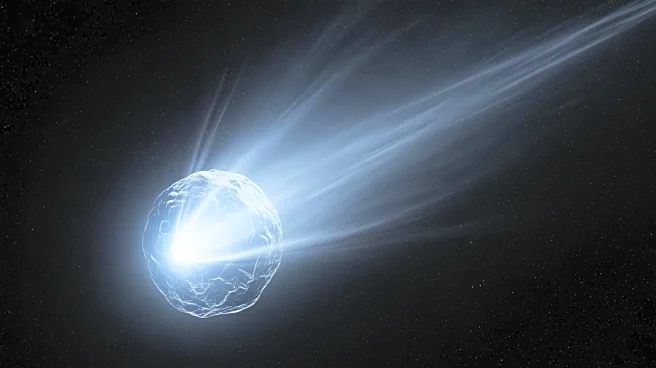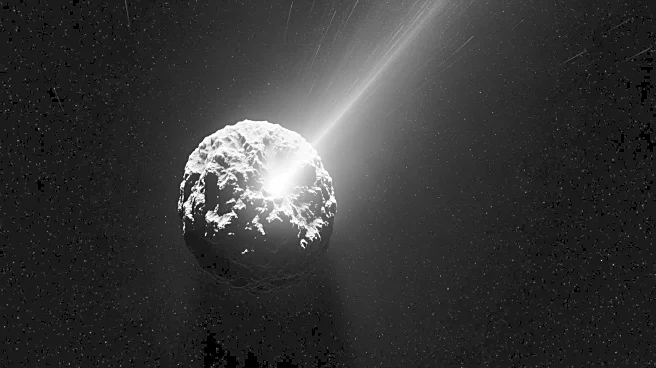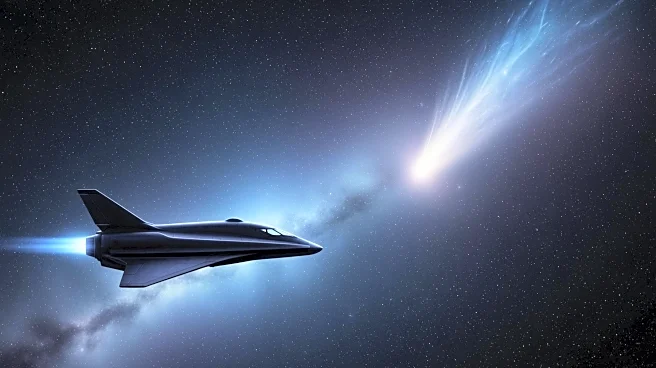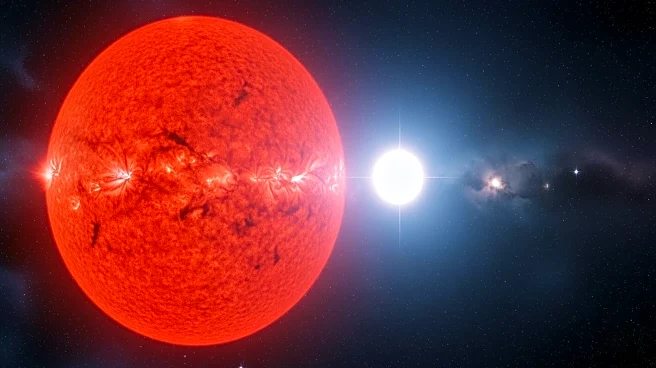What's Happening?
Uranus, the seventh planet in our solar system, reaches opposition on November 21, 2025, making it the closest to Earth for the year. This event provides an excellent opportunity for skywatchers to observe
the planet, which is located near the Pleiades star cluster in Taurus. Discovered by William Herschel in 1781, Uranus is the third-largest planet, but due to its distance of 1.8 billion miles from the Sun, it appears dim in the night sky. At opposition, Uranus shines at magnitude 5.6, making it potentially visible without optical aid under dark skies. However, binoculars or a small telescope are recommended for a clearer view.
Why It's Important?
The opposition of Uranus is a significant event for astronomers and enthusiasts, as it allows for detailed observation of the planet's features. This period is ideal for studying Uranus's atmosphere and moons, contributing to our understanding of the outer solar system. Observing Uranus can also enhance public interest in astronomy, encouraging educational activities and community engagement. The event highlights the importance of preserving dark skies for astronomical observation, as light pollution can hinder visibility. Uranus's opposition serves as a reminder of the vastness of our solar system and the ongoing exploration of its distant members.











